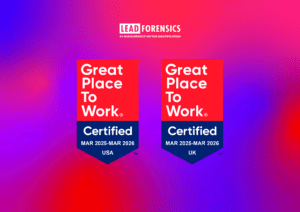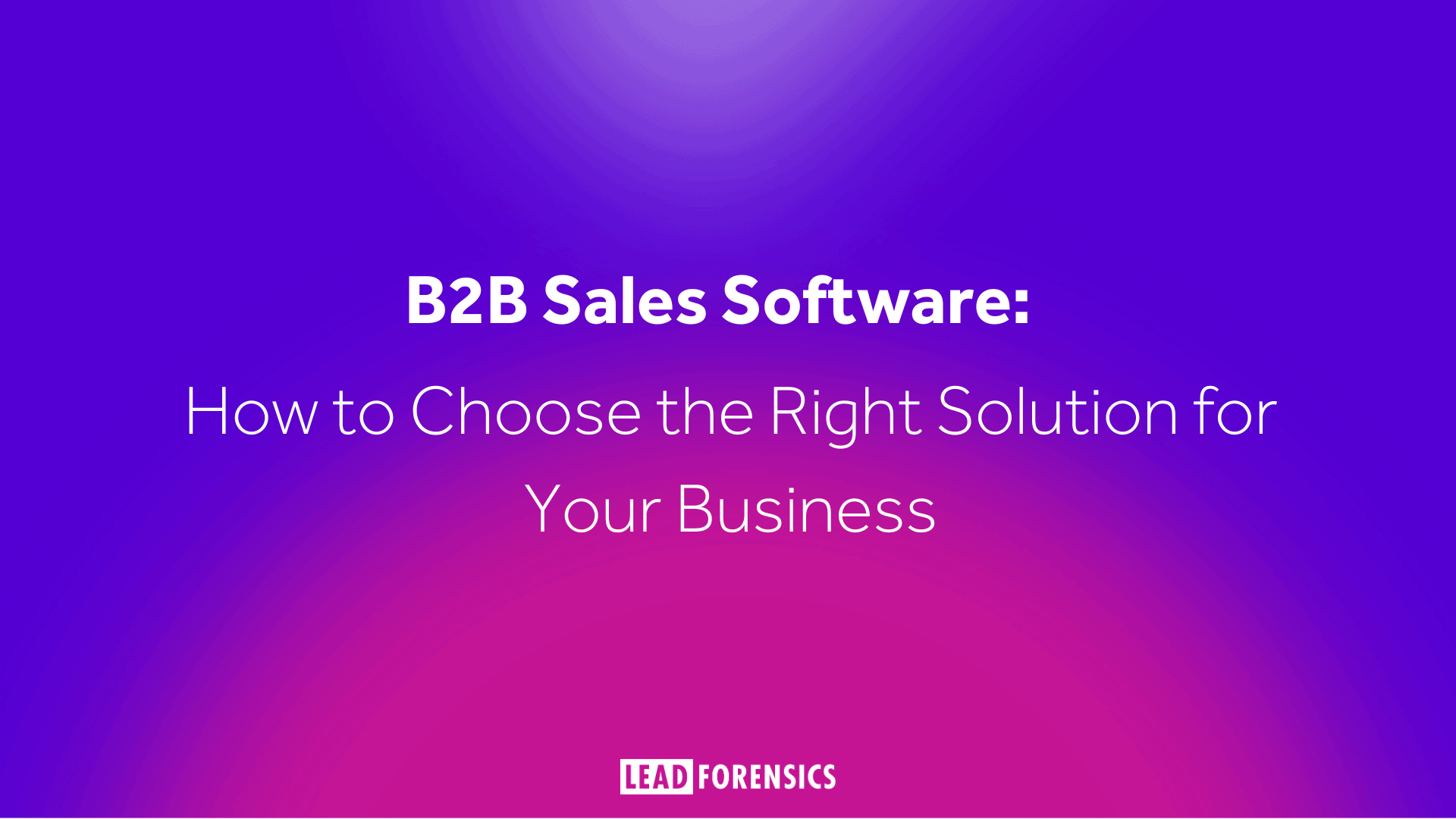By focusing on these warm leads, you can have more productive conversations because you know more about who you’re speaking to. It also allows you to build on the existing rapport between your contact and your brand to strengthen your relationship.
Ultimately, this means you can close more sales with the same amount of resource.
What is Warm Calling?
Warm calling is when you reach out to a prospect who’s had some kind of interaction with your company before. It could be any kind of contact: they might have visited your website, met you at a conference, seen your LinkedIn content, attended an event or completed a contact form.
You want to target these prospects because they convert at a higher rate. That means that if you can identify your warm leads, you should close more sales and shorten the sales process.
Plus, when you call a warm lead, they’ll recognize your company and won’t be too surprised to hear from you. This familiarity is very different to what you can expect from a cold call.
How is it Different from Cold Calling?
Cold calling is when you contact a potential business customer who hasn’t interacted with your company before. The call is considered “cold” because the prospect isn’t expecting your call and there’s no way of knowing whether they could be interested until you try to speak to them.
How Does Warm Calling Work?
When you make a warm call, you already know a bit more about the prospect. This extra insight allows you to edit your script to make it feel more personalized to each person, helping you to grab their attention and build rapport.
The kinds of things you can do on a warm call – but are almost impossible on a cold call – include:
- Tailoring your pitch to their needs. Instead of guessing what they want, you might be able to build a picture of what really interests them by looking at their previous engagement with your company.
- Giving some context for why you’re getting in touch. Referencing previous interactions with your brand shows you’re attentive and you value their interest, which helps to build familiarity.
- Asking more in-depth questions. Because they’re a warm lead, they’re more likely to be open and responsive, which allows you to ask detailed questions and learn more about how you can help them.
Why is Warm Calling Effective?
One of the main reasons why warm calling is so effective is because the prospect has already shown that they have an interest in your company. This means they’re more primed for your pitch, so they require less persuasion and often convert at higher rates than cold leads.
This is backed by research from the RAIN Group, which found that insight into the use of products or services to solve business problems influences 66% of buyers to accept a meeting with the seller.
This kind of insight supports sales enablement efforts, too: organizations that understand what content engages buyers are 38% less likely to struggle with sales velocity and lose fewer deals due to no decision, according to research by Sales Enablement Pro.
It’s also a more efficient way to sell. Warm calling gets higher success rates than cold calling, but it requires less time and effort. That makes it much more effective than churning out hundreds of cold calls every day – though that’s still an important strategy for B2B sales.
What are the Challenges of Warm Calling?
There are some notable limitations to warm calling:
- Success often relies on the quality of your data. If the information is wrong, you risk alienating a potential customer because they can lose trust in your brand, and it may damage their perception of the company.
- The reach is limited. Because this is focused on people with existing interactions, it misses any prospect who hasn’t already engaged with your brand but might be desperate to know your solution exists.
- It requires more prep time. The level of personalization is much higher for warm calls, which makes it more time consuming.
Are Warm or Cold Calls Best for Your Business?
If you’re trying to decide whether your team should switch to warm calling over cold calling, there are a few things you need to consider first:
- Do you already have a way to measure which companies are showing interest in your brand? If your website doesn’t currently identify its website visitors, this may be a blocker.
- Can you see what people engage with on your website? If you can’t see who’s downloaded an eBook, registered for a webinar or repeatedly viewed a blog post, it will be harder to accurately discuss their interest.
- Do you need to expand your customer base quickly? Warm calling builds relationships and nurtures leads but it doesn’t mean instant sales.
- Is it appropriate for your business and industry? If you’re selling something that doesn’t require more than quick, direct outreach then warm calls may not work for you.
Combine Warm and Cold Calls for Maximum Success
The reality is that most B2B businesses will perform better with a blend of warm and cold calling.
You can use cold calling to reach out to unknown prospects and generate sales qualified leads. Typically done by a Sales Development Representative, this essential step ensures you focus on the types of companies that are most likely to become customers.
Once identified, the lead is then handed over to a Sales Executive, who can make their warm call and begin the sales process.
Where do You Find Warm Leads?
There are many ways that you can identify warm leads for your business:
- Take a look at your recent marketing lead magnets and see who gave their details in exchange for access your whitepaper or eBook.
- Export a list of all webinar attendees.
- Check your social media channels and build reports of who is most actively engaging with your content.
- See who’s clicking on links in your emails.
- Encourage existing customers to refer new ones your way.
Make This Easier with the Right Tools
The above ideas would take a lot of time to work through manually. But thankfully, there are several tools available to help you uncover who’s actually interested in your company.
Some of the most effective tools include:
- LinkedIn Sales Navigator lets you find and connect with people based on their professional profiles and activity.
- HubSpot CRM helps you nurture warm leads by building automated follow-ups.
- Salesforce will score your leads and automate follow-ups to help you keep your prospects warm.
- Form-builders let you embed forms to capture the data of people who want to access gated content.
- Lead Forensics identifies which companies are visiting your website and what they look at. It also gives you the contact details of key decision makers and integrates with your CRM system so you can seamlessly manage those warm leads.
How to Start Your Warm Calling Campaign
If you’re ready to introduce warm calling to your sales process, the very first step is to identify who’s best to work on this type of conversation. Your sales team are probably already well equipped for this, but choosing people with strong skills in empathy, active listening and adaptability can help.
Follow the Warm Calling Process
Until you work out what works for your business, you might find it helpful to follow the typical warm call process:
- Research your leads. See what additional information you can find that will help you tailor your script. 42% of B2B sales pros say this is the most effective way to make a sale, according to HubSpot.
- Prepare your pitch. Create a new version that focuses on what the lead is most interested in and how you can help.
- Start the conversation. A classic warm call opener would be to reference their interaction with your brand to establish a connection.
- Ask open-ended questions. Find out what their needs and challenges are, or what goals they’re working towards, and show genuine interest in helping them.
- Provide value. See what else you can share that’s directly relevant to them.
- Follow up. Send an email to summarize the key points of your call and outline any next steps.
Uncover Your Warm Leads with Lead Forensics
Ready to see how Lead Forensics can show you which companies are already engaging with your website and turn anonymous B2B website traffic into actionable sales leads? Try it for free and experience the difference it can make for your B2B sales success. Click here to book your demo and start your journey toward more productive, meaningful conversations today!










